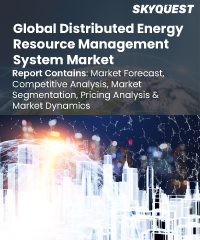
Report ID: SQMIG10B2064

Report ID:
SQMIG10B2064 |
Region:
Global |
Published Date: August, 2024
Pages:
178
|
Tables:
64 |
Figures:
75
Global Distributed Energy Resource Management System Market size was valued at USD 425.03 million in 2022 and is poised to grow from USD 517.69 million in 2023 to USD 2058.74 million by 2031, at a CAGR of 21.8% during the forecast period (2024-2031).
The Distributed Energy Resource Management System Market is an emerging and rapidly growing sector. The primary purpose of DERMS is to manage the integration of various renewable energy sources, such as solar, wind, and hydropower, with traditional power grids. With the increasing demand for clean energy and the need to reduce carbon emissions, DERMS has become a crucial component of modern energy management systems. One of the key drivers of the DERMS market is the rising adoption of distributed energy resources (DERs), which include rooftop solar panels, small-scale wind turbines, and energy storage systems. The growing popularity of DERs is due to their ability to provide a cost-effective and reliable power supply, especially in remote areas. Moreover, the increasing focus on grid modernization and the need to enhance the grid's resilience to natural disasters and cyber attacks are also driving the distributed energy resource management system market's growth. DERMS plays a critical role in optimizing the use of renewable energy sources and balancing the energy demand and supply in real-time, thereby improving the grid's stability and reliability. However, the market faces some significant challenges, such as the high initial installation costs and the lack of standardization in DERMS technologies. Additionally, the complexity of managing multiple DERs and integrating them into the grid poses a significant challenge for grid operators. Despite these challenges, the DERMS market presents several opportunities for growth, including the increasing demand for energy storage solutions, the development of advanced analytics and machine learning technologies, and the rising adoption of smart grid technologies.
Our industry expert will work with you to provide you with customized data in a short amount of time.
REQUEST FREE CUSTOMIZATIONWant to customize this report? This report can be personalized according to your needs. Our analysts and industry experts will work directly with you to understand your requirements and provide you with customized data in a short amount of time. We offer $1000 worth of FREE customization at the time of purchase.

Report ID: SQMIG10B2064